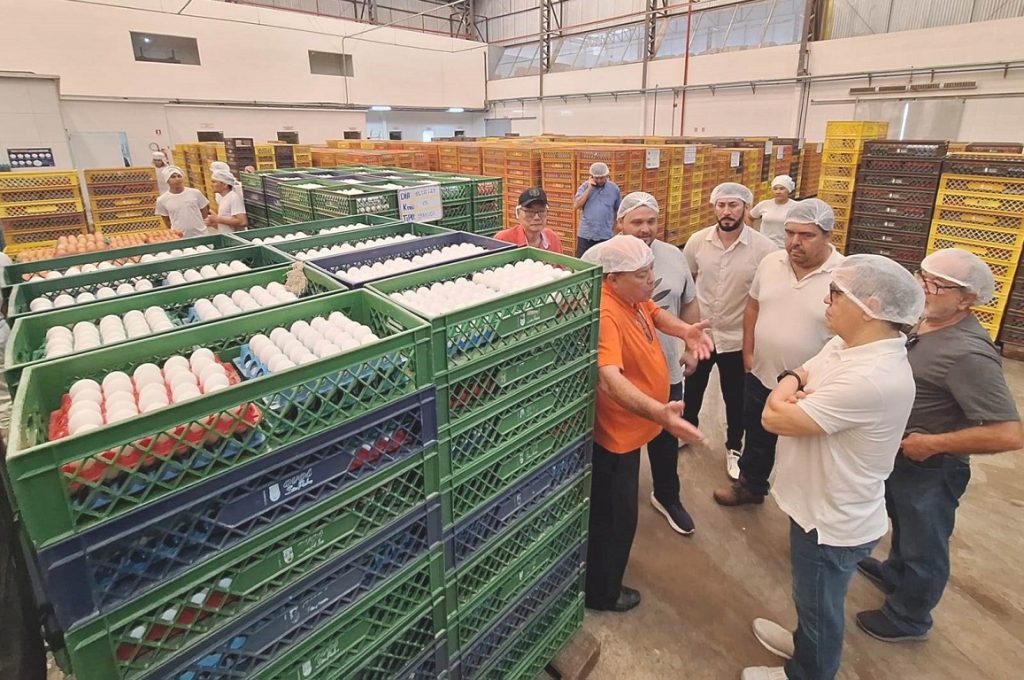40-year-old enterprise invests in the agribusiness area and presents news to Suframa
[ad_1]
Manaus (AM) – From a simple business whose initial proposal was the production of broiler chicken on land located in the Petrópolis neighborhood, South Zone of Manaus, – where the old Granja Santa Marta operated, almost 40 years ago – to a reference in the layer poultry farming market , with expansion throughout the area of the Suframa Agricultural District (DAS) and surrounding areas, Suframa learned, this Thursday (2), of the São Pedro Group’s new investments in the Amazon.
The superintendency’s objective with this type of action, according to superintendent Bosco Saraiva, is to strengthen relations with agribusiness and promote new employment and income opportunities for a practically forgotten sector of the Industry/Commerce/Agriculture tripod, of the Manaus Free Trade Zone ( ZFM), in recent years.
The visit was led by the superintendent himself and lasted around six hours, covering a 69-kilometer road, completed by him and the technical team on BR-174, the highway that connects Manaus to the municipality of Presidente Figueiredo.
“Enterprises like this, business generated in Suframa’s agricultural sector, have not received due recognition in recent years. In addition to not having grown in the same proportions as the industry, DAS faced a series of problems, and irregular land occupations are among them. Therefore, this type of visit is important, both to publicize production potential and encourage new businesses in areas such as agroindustry and bioeconomy, and to create employment and income opportunities for our people”,
stressed Bosco Saraiva.
The first stop was at kilometer 3, where the Egg Production Center (CPO) operates. The complex was built six years ago and, in addition to employing almost 60 people, its reference is the Dutch Moba machine, responsible for inspecting, displaying and classifying products.
“Moba came from a country that ranks first in machinery technology for this type of business. It even surpasses countries like the United States and Japan”,
informed the civil engineer from Itacoatiar and owner of the project, Francisco Helder de Oliveira Peixoto.
In the same area, the group visited the feed factory, used in the initial stages of growth and laying of chickens. In total, 32 types of food are produced to serve different species, with extension to the pet line and livestock.

Another novelty is in the area of metallurgy. The group has made investments linked to civil construction and served the national and international markets, manufacturing tiles, nails, barbed wire, column structures, stirrups and others.
Further ahead, at kilometer 8, the Hatchery was presented where fertile eggs are produced and the necessary conditions are created for them to be transformed into chicks.
Arriving at kilometer 23, with another 4 kilometers of extension inland, visitors learned about the process of genetic cattle farming, whose work is done in vitro and prioritizes the quality of cutting-edge animals, genetically improved for milk and meat production, of the breeds gir dairy, girolando and nelore. The activity involves more than 400 head of cattle.
At kilometer 30, already within the DAS area, the visit toured the warehouses where the evolution of the chickens is monitored, which is divided into the pre-initial phases (up to 42 days), growth (from 42 to 105 days) and laying, when egg production itself begins. Currently, the investment covers a total of 1.3 million nozzles.
Oranges
The visit route, completed around an enterprise that has a portfolio of almost 240 items and employs just over 2 thousand people, ended at kilometer 69, more precisely in an area of 400 hectares, where the production project is carried out of oranges.
In addition to planting and growing the fruit, work in the orange grove is centered on washing and classifying the product. Part is sent to the consumer market and the other will be used in the juice factory, to be built soon, at kilometer 3, of BR-174.
“You came to make this technical visit during the holidays, and I want to thank you for that, as you got to know a project whose mentor is Mr. Raimundo Valdelino Cavalcante (partner). Alone, no one does anything. Today, we feel that there is greater interaction with Suframa, which is relevant for the environment, considering that few superintendents came here to learn about and monitor our business”,
highlighted Francisco Helder de Oliveira Peixoto, better known in agribusiness as Chicão, aged 71.
*With information from consultancy
Read more:
Manaus enters the ‘Lonely Planet’ list of the best tourist destination cities
Construction companies can become accredited to participate in Amazonas Meu Lar
‘Senac Capacitar Manaus’ opens registrations for businesspeople and employees
[ad_2]
Source link




:strip_icc()/s02.video.glbimg.com/x720/12519489.jpg)



